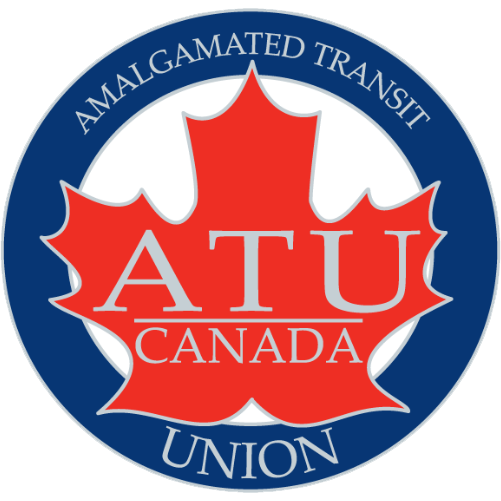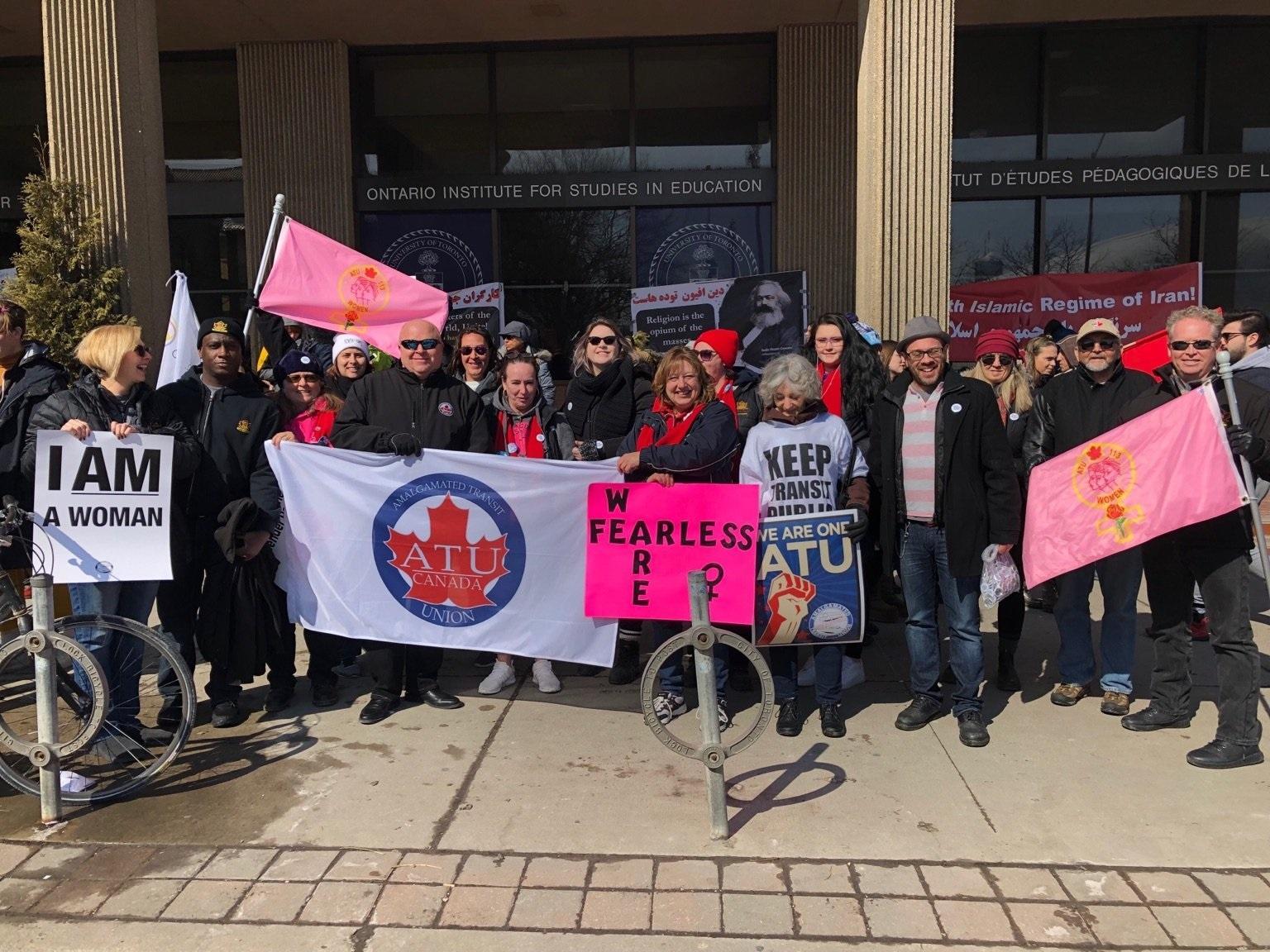March 8th is International Women’s Day, a day to celebrate women’s achievements and take collective action for equality. The UN-recognized event was born of women organizing in the labour, socialist, and peace movements.

ATU Canada President Di Nino joins ATU members from Ontario at the Women's Day March in 2019 in Toronto
In the spirit of feminist grassroots organizing and union women’s advocacy work, ATU Canada recognizes the important strides made by ATU members to bring dignity to their working environment and fight for equality in their communities. We owe a great debt of gratitude to the women and allies who have made transit spaces safer and more welcoming to women workers and riders.
This annual celebration is also a time to recommit protesting against the barriers to gender equity, justice, and dignity experienced by all women*, women transit workers, and women transit riders.
*In the tradition of intersectional feminism, this women's day post encourages a culture of gender equity that is trans-inclusive, and inclusive of gender diverse people and queer women.
What has gender got to do with public transit?
Transit, like all public spaces and workplaces, has gendered dimensions. In Canada, and indeed, globally, women make up the majority of transit users and the minority of transit workers. According to the Canadian 2016 census, 57% of commuters by public transit are women. This is consistent with research globally, which establishes that gender is a bigger determinant of modal choice (ie. which form of personal mobility one chooses) than age or income. The reasons for which public transit is more widely used by women than men are varied; travel behaviour are different because women are more likely to run errands, care for children and elderly dependents, and work precarious, low-paying, or irregular jobs. Many riders groups and politicians frame good public transit as a feminist issue.
However, women’s voices and experiences in transit are not well understood, meaning that services, policies, and planning decisions may not consider the needs of the majority of users. An obvious example of this is women’s safety. Personal security challenges may deter women from using transit, meaning that their access to jobs and services becomes strained. This has colloquially been referred to as the “Pink Transit Tax” following research by the Rudin Institute in NYC, which finds that “29% of women said they don’t take public transportation late at night because of it, compared with 8 percent of male respondents” instead opting for more expensive option, like hiring a taxi cab.
In 2019, Canadian journalists captured the often-untold stories of sexual assault experienced by transit operators and transit riders in Canada. ATU Canada has called for a Transit Worker and Pedestrian Protection Act to come up with preventative measures to end sexual violence in all forms.

ATU Women at Lobby Days Ottawa 2018
What has gender got to do with public transit jobs?
Anecdotally, the gender gap in transit is obvious when considering women’s participation in the transit labour force. While the face of transit is certainly shifting as employers take active measures to hire more women, women bus operators make up about 13% of transit operators in Canada.
Despite changes in the transit workforce, transit is still a male-dominated industry and transit jobs are still considered a traditionally male occupation. This bias often results in occupational segregation that shows up as persistent gender stereotypes, pay discrepancies, and inadequate gender-specific policies in the workplace.
ATU Local 1505's Loni Petrowski shares her experience working for the trades: https://winnipeg.ca/ourstories/2020/200304.stm?fbclid=IwAR2xbkq6kO6BXz9_...
The experience of being a woman working in transit is not homogenous, but there are themes that are consistently identified. Many of the barriers identified by women are echoed in the ATU Canada Gender Equity Report and Recommendations, including: access to bathrooms, sexual harassment, access to appropriately fitting personal protective and safety equipment, ergonomics, work/family policies, and a culture that can be hostile to women.
Bargaining for Equality
Women are disproportionately impacted by bad workplace policies. As Helena Worthen writes in Cracking Labour’s Glass Ceiling: “If you are working for wages in an economy that is not designed to protect you, everything you do is a labour issue.”
To this end, improving the working/material conditions of women in the transit workforce makes transit a safer space for all workers and riders. As a union, we are deeply committed to improving the working conditions for members and seeking dignity and fair compensation—challenge ourselves to think through the additional gains that are available for us to take if we consider making the workplace a better place for women.

ATU Women at Prairie School for Union Women in 2019
ATU Canada is in the process of developing a Women’s Advocacy and Gender Equity Bargaining Guide that will launch in 2020. In the meantime, the following resources provide workers tools to assess and address specific gender-based concerns in their individual workplaces:
International Transport Workers’ Federation (2014). Women bus workers driving to equality.
International Transport Workers’ Federation (2019). Future of Work for Women in Public Transport.

